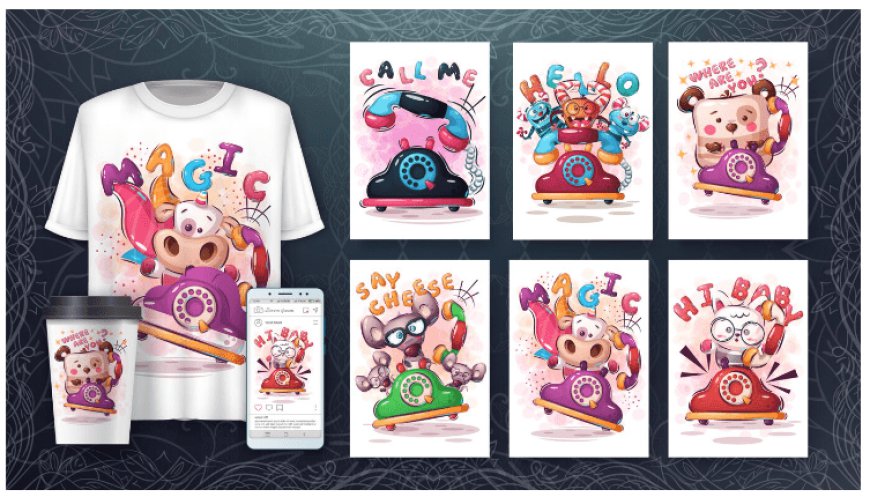Direct to Film Transfers and DTF Printing: A Comprehensive Guide
direct to film transfers is an innovative printing method that has gained traction in recent years due to its flexibility, quality, and efficiency. This technology allows for the creation of high-resolution, durable prints on a wide range of materials, making it an attractive option for custom apparel, promotional items, and other personalized products.

Introduction to Direct to Film Transfers
direct to film transfers is an innovative printing method that has gained traction in recent years due to its flexibility, quality, and efficiency. This technology allows for the creation of high-resolution, durable prints on a wide range of materials, making it an attractive option for custom apparel, promotional items, and other personalized products.
The Process of DTF Printing
DTF printing involves several key steps that work together to produce vibrant and long-lasting designs. Here’s a closer look at the process:
1. Design Creation
The first step in DTF printing is designing the artwork. Using graphic design software, you create a high-resolution image that will be printed onto a PET film. This design is typically mirrored to ensure that the final print appears correctly on the end product.
2. Printing on PET Film
The mirrored design is printed onto a special PET (polyethylene terephthalate) film using a DTF printer. DTF printers use a combination of CMYK inks for full-color reproduction and white ink to enhance opacity, especially on dark or colored fabrics. The use of white ink is crucial for achieving vivid and vibrant colors.
3. Applying Adhesive Powder
After printing, a hot-melt adhesive powder is applied to the printed side of the film. This adhesive is necessary for transferring the design to the target material. The powder is evenly spread to ensure that the design adheres uniformly and remains durable.
4. Curing the Adhesive
The film, now coated with adhesive powder, is then cured with heat. This step solidifies the adhesive, preparing it for the transfer process. Proper curing ensures a strong bond between the design and the material, enhancing the durability of the final print.
5. Heat Transfer
The cured film is placed onto the desired material, and a heat press is used to apply heat and pressure. This activates the adhesive, allowing the design to transfer from the film to the material. Once the film cools, it is peeled away, revealing a high-quality, vibrant print.
Advantages of DTF Printing
DTF printing offers numerous benefits that make it an appealing choice for custom printing needs:
-
Versatility: DTF transfers can be applied to a variety of materials, including textiles like cotton and polyester, as well as hard surfaces like wood and metal. This versatility allows for a wide range of applications, from custom apparel to promotional products.
-
Durability: One of the most significant advantages of DTF printing is the durability of the prints. The designs are resistant to cracking, peeling, and fading, even after multiple washes and prolonged use. This ensures that the prints maintain their appearance and quality over time.
-
High-Quality Prints: DTF printing delivers exceptional color vibrancy and detail. The combination of high-resolution printing and the use of white ink allows for sharp, vivid designs that stand out and make a lasting impression.
-
Cost-Effectiveness: DTF printing is cost-effective for both small and large runs. Unlike traditional methods such as screen printing, which can be expensive and time-consuming to set up, DTF printing offers a more economical solution for custom orders and smaller quantities.
Choosing the Right DTF Printer
When selecting a DTF printer, consider the following factors to ensure you get the best results:
-
Print Quality: Choose a printer that provides high-resolution output and vibrant color reproduction. The ability to print fine details accurately is essential for achieving professional-quality results.
-
Speed and Efficiency: Depending on your production needs, you may require a printer that can handle high volumes quickly. Ensure that the printer's speed does not compromise the quality of the prints.
-
Material Compatibility: Opt for a printer that works with a variety of PET films and materials. This flexibility allows you to expand your product offerings and cater to different customer needs.
-
Ease of Use and Maintenance: Look for a printer that is user-friendly and easy to maintain. This will help reduce downtime and ensure smooth operation, especially if you are new to DTF printing.
Conclusion
Direct to Film transfers and dtf printing represent a significant advancement in the custom printing industry. Their ability to produce high-quality, durable, and vibrant prints on a wide range of materials makes them a valuable tool for creating personalized products. By investing in the right DTF printer and mastering the process, you can achieve outstanding results and meet the diverse needs of today’s market. Whether you're creating custom apparel, promotional items, or unique personal products, DTF printing offers a versatile and cost-effective solution that delivers exceptional quality and durability.

 rachaelstafford1992
rachaelstafford1992